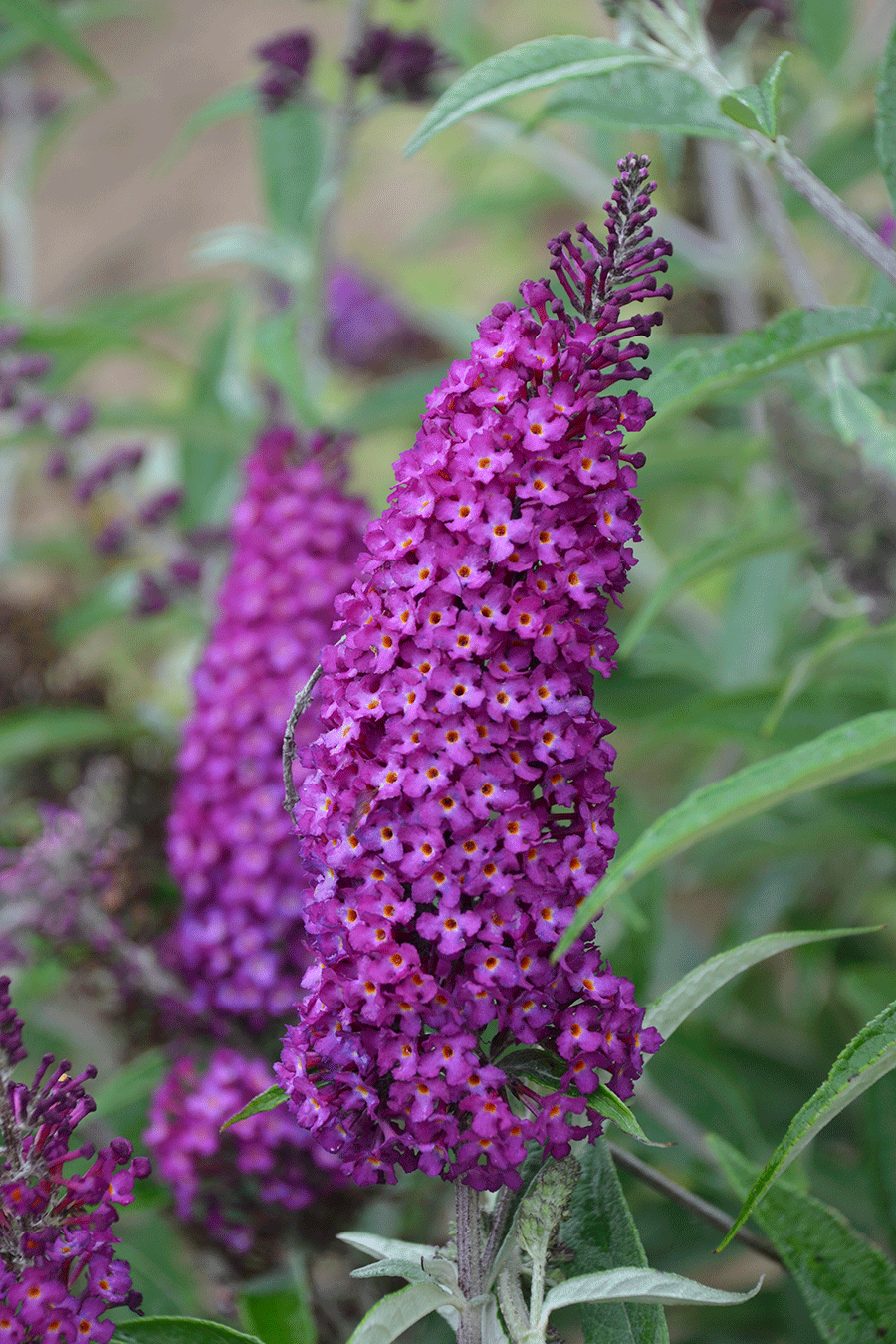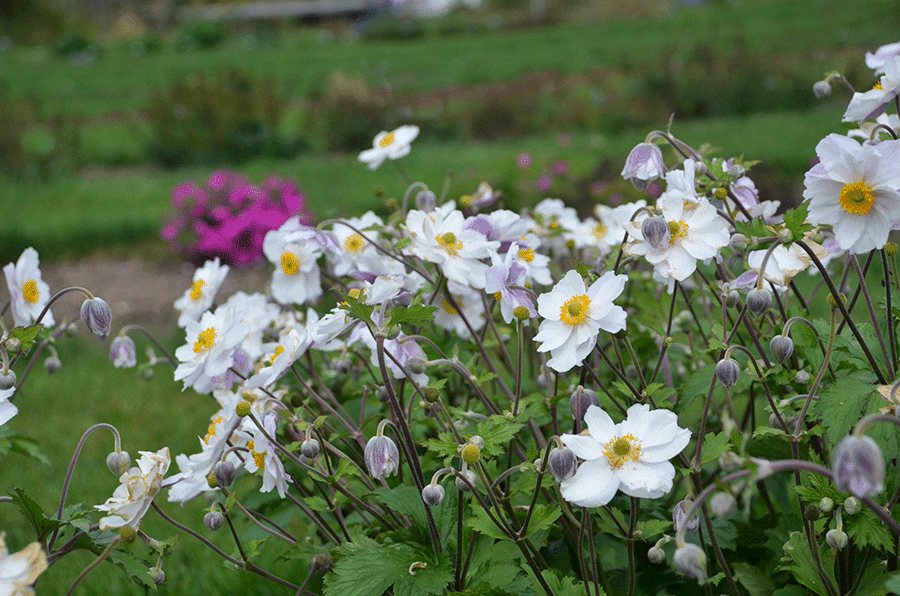
When choosing a new plant for your garden, there are many factors to ponder: Does it have the colour, size and bloom time you desire? Does it suit the site? Is it fussy or easygoing? Fragrant, long blooming, pest resistant? One often-overlooked attribute, though, is the ability of some plants to animate a border. These botanical Baryshnikovs gracefully sway, swish or sashay in a breeze, enlivening a combination of plants with their performance.
You might assume a list of dancing plants would contain only ornamental grasses. While many do meet the criterion, some grasses are steadfastly stiff, and only their flowering tassels move in the wind. Here are 11 plants, including woody plants and flowering perennials, that will add a grace note to your garden when breezes blow.
Plants that dance, ornamental grasses
Northern sea oats (Chasmanthium latifolium)
Flat flower spikes bob and twirl from arching, wiry stems—like mobile art by Mother Nature. The foliage resembles that of a small bamboo plant; can self-seed. About three feet (90 cm) tall; sun or shade; Zone 5.
‘Skyracer’ purple moor grass (Molinia caerulea ssp. arundinacea ‘Skyracer’)
Even though this is the tallest perennial on this list, consider placing it near the front of a border and backing it with dark green plants, so its delicate spikes of blooms are visible. In Perennial Gardening Guide, John Valleau describes ‘Skyracer’ as “kinetic sculpture,” because its lightweight flowers are in constant motion from the slightest breeze. Height can range from six to eight feet (1.8 to 2.5 m); sun to part shade; Zone 4.
Giant feather grass (Stipa gigantea)
Grey-green foliage is topped with tall, arching plumes of feathery flower spikes in summer. One plant is enough to create a fine show. Intolerant of wet winters; cut back in early spring before new growth begins. Height is about seven feet (2 m); sun; Zone 6.
Mexican feather grass (S. tenuissima)
In containers or at the edge of a border, Mexican feather grass flutters and floats in a breeze. When the bright green leaves develop their fuzzy, fluffy flowers, its nickname “split-ends grass” seems apropos. About 20 inches (50 cm) tall; sun; Zone 6.
Woody plants
Butterfly bush (Buddleja davidii)
Butterfly bush grows quickly after it’s cut back to a few inches (about 8 cm) above ground in early spring. By midsummer, purple, pink, rose, white or lilac flower trusses at the ends of the branches will be bobbing up and down from monarchs and bees jostling for a spot to land. Choose non-compact varieties for full effect. Up to seven feet (2 m) tall; sun; Zone 5.
Weeping Nootka cypress (Chamaecyparis nootkatensis ‘Pendula’)
Some might view this as a drooping tree, not a dancing one, but the ‘Pendula’ cultivar’s elegantly arranged branches are light on their feet when a wind stirs them. Up to 33 feet (10 m) tall; sun to part shade; Zone 5.
Dwarf Arctic willow (Salix purpurea ‘Nana’)
The slim reddish-purple stems lined with narrow blue-green leaves that ruffle and ripple in the wind are almost as flexible as those on ornamental grasses — a row of several plants would be striking. Tolerant of wet or heavy soils; cut back to just above ground level every other year to keep shrubs tidy and stems supple. Four feet (120 cm) tall; sun to part shade; Zone 3.
Perennials
Hybrid Japanese anemone (Anemone hybrida)
Commonly called windflowers, these tall plants have flowers that dip and bob atop long, wiry stems. White ‘Honorine Jobert’ and rosy Rose Bowl (A. ´h. ‘Rosenschale’) are taller and have larger flowers than other single-flowering hybrid Japanese anemones. They generally bloom from early September until the end of October. About four feet (120 cm) tall; sun to part shade; Zone 6.
Butterfly gaura (Gaura lindheimeri)
A long-blooming native, wispy gaura blossoms look like tiny, pale pink butterflies hovering over plants below. Drought and heat resistant. Several cultivars available, although some are compact and not quite as mobile. Up to four feet (120 cm) tall; sun to part shade; Zone 5.
Burnet (Sanguisorba officinalis)
Long-blooming, fluffy oval red or white flowers sway on wiry stems in midsummer. Height is about 72 inches (180 cm); sun to part shade; Zone 4.

Designing a garden with plants that move
Although pliable flowering perennials and grasses are often tall, they don’t necessarily need to be relegated to the back of a bed or border. In fact, when positioned behind shorter companions, much of their graceful wind dance will be hidden from view. Instead, give them front-row status, or fill an entire bed.
Their movement can be appreciated from a distance, too — from your kitchen window or patio, for example. And many add their architectural presence to a garden throughout winter.









Can you also give us plants that move for Zone 10 besides the grasses? Thanks.
Thanks for the ‘plants that move’ article…..great to have this feature right outside the kitchen window….really catches the eye and adds interest.
RA